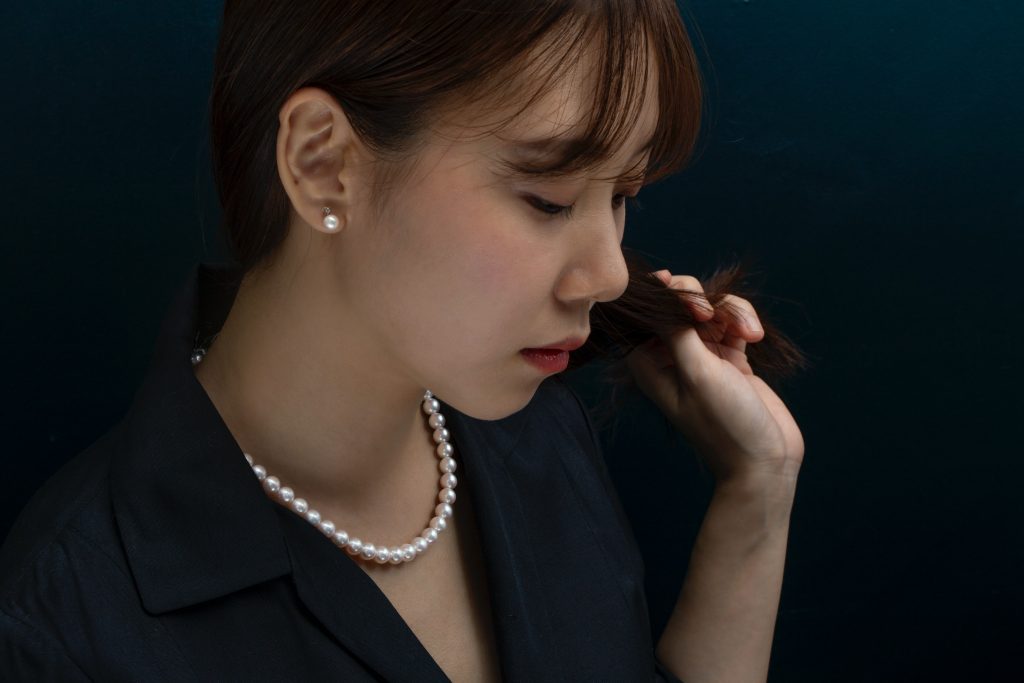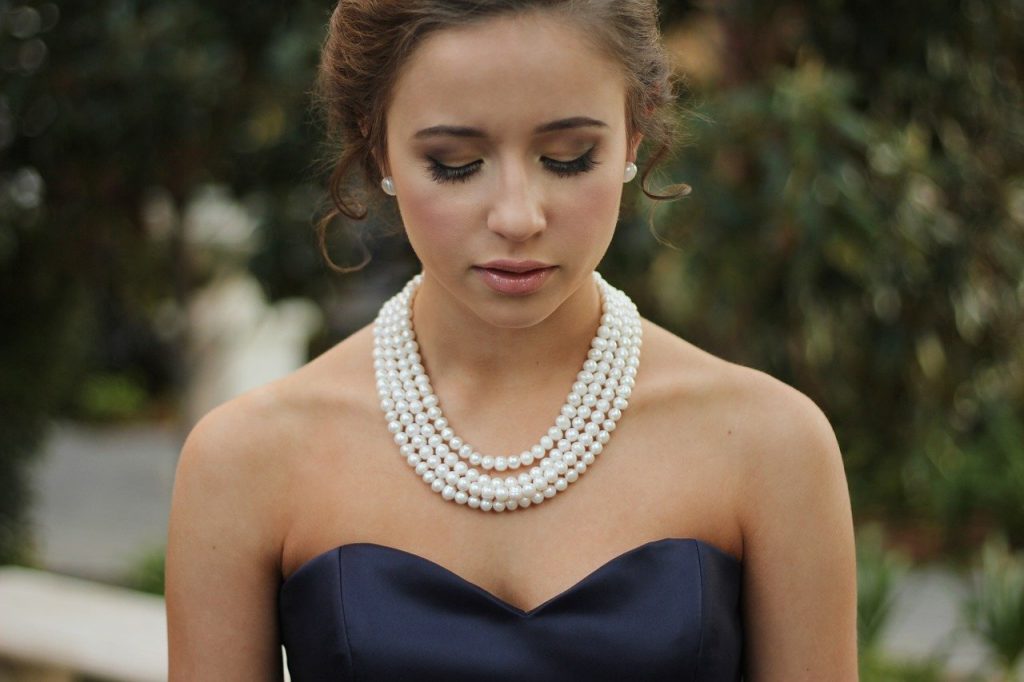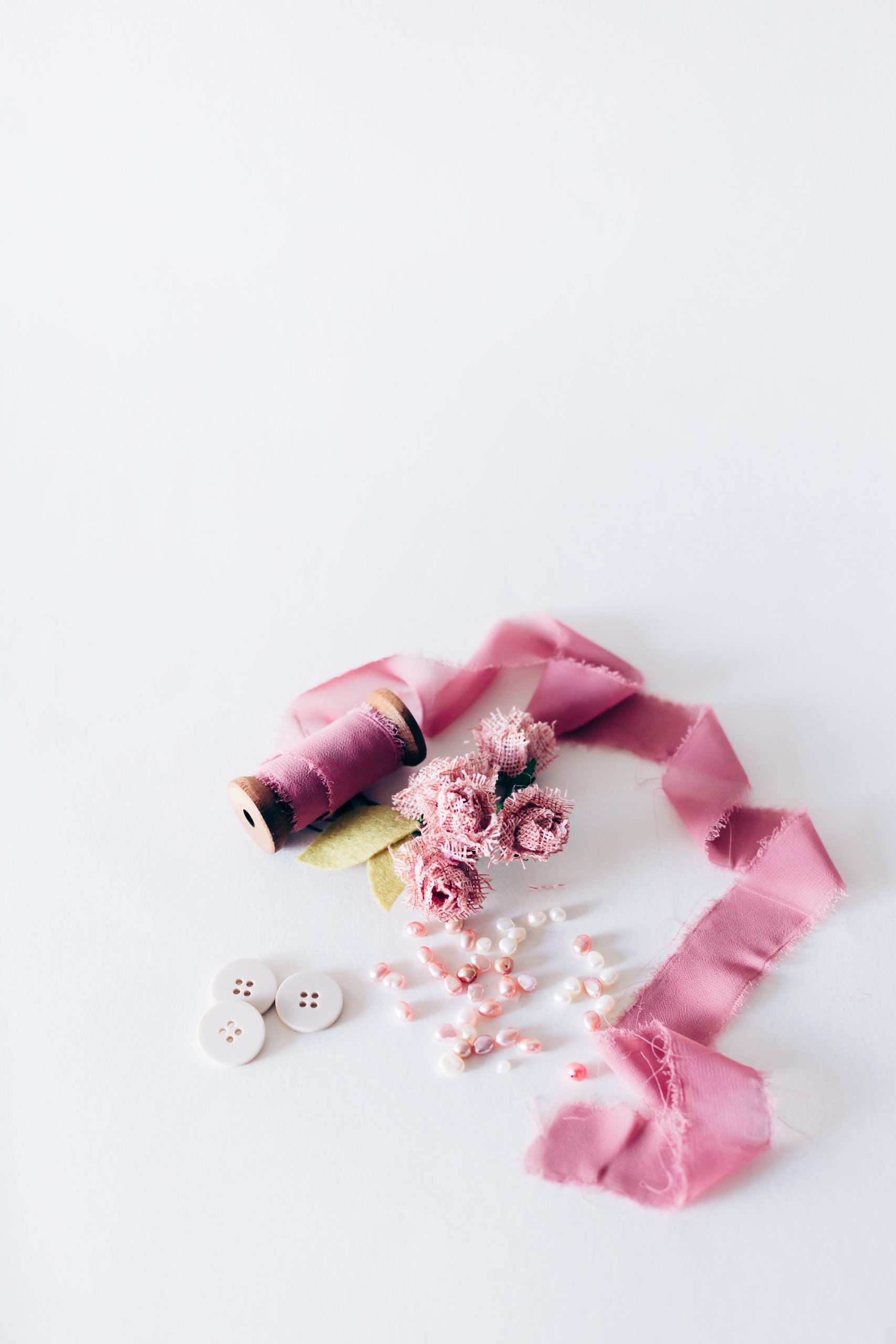Few things in the jewelry industry are as fascinating and complicated as pearls. This piece of jewelry has long been used in the fashion world as an alluring accessory. No matter how beautiful the pearls may be, all of them are not the real deal.

If you are planning to buy jewelry or perhaps your loved one just gave you a gift and you are curious to know whether it is a real pearl necklace, this could be the ultimate guide for you to distinguish a fake one from a real one.
Take the time to do the following tests and examine pearls before buying one. This will especially be useful for you if you are about to buy pearls from a stranger or an unreliable source on the market which is full of imitations.
Tests you can do at home
The Tooth Test
The market today offers natural, cultured, and even imitation pearls. Most fake pearls can be distinguished by their surface structure. Rubbing a pearl against your teeth is a quick and easy way to determine consistency. Lightly rub a bead or piece of beads along the biting edge of your upper front teeth. Real and cultured pearls feel a little grainy, while most fake pearls feel smooth.
If you still have difficulty distinguishing structure, rub a round glass bead against the biting edge of your upper front teeth for comparison.
The Drill Hole Test
Before doing this test, you should know that drilling a hole in your bead damages it permanently. Perform the drill test only if you do not care so profoundly about the pearl’s value. Carefully drill a small hole in the bead with the smallest drill you have available.
Look into the hole with a magnifying glass. You can recognize a real pearl by a dark dividing line that separates the nacre from the nucleus. Remember that imitations of natural pearls lack this line.
Tests You Can Do at the Jewelry Store

The Cool to the Touch Test
Hold the beads in your hand and concentrate on how they feel against your skin. Real pearls should feel noticeably cool for a few seconds before warming up. The feeling is similar to what you would get from walking barefoot on a marble floor.
If the pearls are plastic, however, they will be about room temperature and heat up faster. But be careful with this test cause fake glass pearls of good quality can still give the “cool” feeling.
The Friction Test
The uneven surface texture of a real pearl should give it a remarkable amount of friction when you rub it against another pearl. Choose two pearls from the set, for example, two pearls from the same necklace or two pearl earrings. Lightly rub two beads together.
Note the amount of friction between the two. Smooth pearls are probably fake, but two pearls that offer resistance can be real.
Magnifying Test
As in diamonds, magnification can reveal a lot about the quality of pearls. For results you can see, look at your gem through a powerful magnifying glass. Borrow a microscope or a powerful magnifying glass.
Place your bead under the magnifying glass and examine its surface under a 64-power magnification loupe. Real pearls should look fine-grained, scaly, and labyrinth-like, while fake pearls should look grainy or mottled.
The Comparison Test
If a pearl seems “too perfect to be true,” there is a good chance it is not a real pearl. This comparative test will help you determine the quality of your gem.
Examine the pearl for imperfections. Real pearls will have small flaws, while flawless pearls are likely imitations.
If possible, compare the pearl in question with a high-quality certified pearl. Look for stains in the real pearl, and look for similar flaws in the pearl you are testing.
The Overtone Test

The pearl overtone is a transparent outer layer of color that tones the pearl’s natural color. Examine the bead in question for any overtone. Most real pearls have some.
If you see any overtones, try another test too. While most real pearls have them, not all do and therefore this test alone cannot verify or dismiss the realness of a pearl.
The Weight Test
This is not a scientifically-proven test, nor is it fully reliable but measuring the weight of a pearl simply by holding it can help you confirm the suspicions you have after performing the other above mentioned tests.
Gently bounce a certified pearl in your hand to get an idea of how much it weighs. Most real pearls feel heavy for their size. Now try it again with the pearl in question. Fake beads typically feel unusually light, unless the fake bead is made of solid glass.
Things to consider
Real pearls consist of platelets made of a calcium carbonate solution called the mother of pearl, also known as nacre. The platelets are laid on top of each other in a hexagonal pattern, like bricks. This gives a pearl its grainy texture. Note that cultured pearls are technically real pearls, although some variations in color, luster, and shape may exist among cultured pearls and natural seawater pearls. In fact, most of the real pearls on the market are cultured.
If in doubt but eager to know, take your pearls to a professional jeweler to have them professionally assessed and certified.
Final Thoughts
It is difficult to resist the allure of pearls as they are glamorous and timeless. As symbols of purity and perfection, pearls bring an air of elegance and sophistication that many people adore.
Some fake pearls are easy to spot, but many can be difficult to pick out with the naked eye. Make sure a pearl is genuine by testing it for authenticity. Many of the above mentioned tests can be performed directly in the jewelry shops before you make the purchase. Other tests, such as the tooth test and drill hole test, are of course tests you will need to perform on pieces you already own and in the comfort of your home.
















Add Your Comment